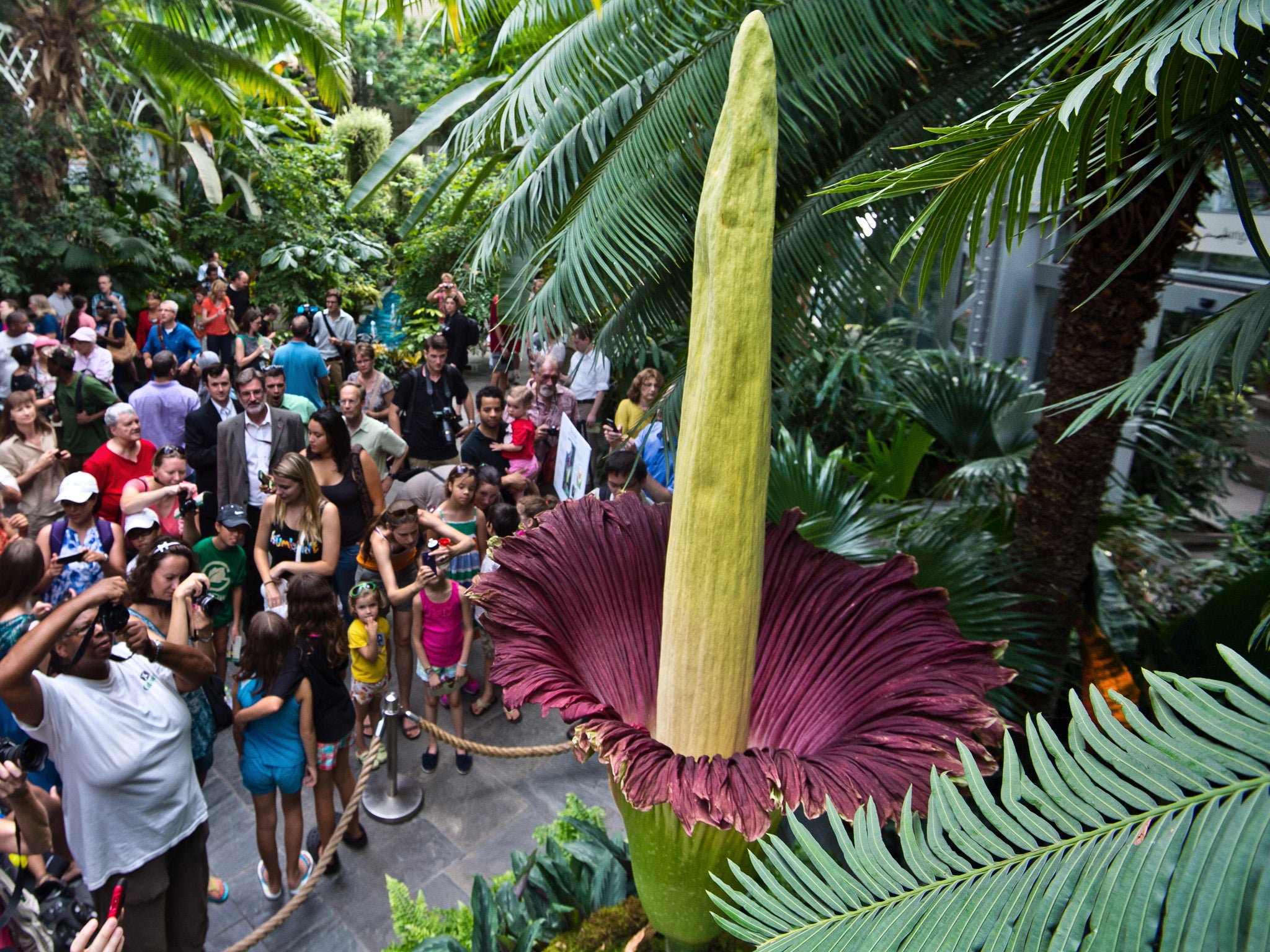Titan's Penis: Why are the French flocking in thousands to see (and smell) this plant?
Emma Townshend investigates our fascination with bizarre horticulture

Imagine leaving a steak for a week in a plastic bag, somewhere nice and warm to get it really whiffy, and then charging people to sniff it. That has been the basic commercial premise at Nantes' Jardin des Plantes this week, where tourists are being diverted from the other pleasures of this beautiful Breton seaside town (giant wooden elephants, conceptual art trails, a slightly bonkers marine-themed three-storey merry-go-round) to sample the delights of the world's stinkiest plant, the Titan arum, Amorphophallus titanum, aka Titan's Penis.
It's not completely clear why visitors to botanic gardens will come in their thousands just to experience a plant giving off a really bad smell, but come they definitely will. UK Titan arums usually bloom only once in around a dozen years. They have flowered in recent years at Kew, Cambridge and the Eden Project, to much publicity, but this one's nevertheless wowing France. It's at least partly because the pong is so fleeting: you have 48 hours, at most, to find your way to Brittany. All making for a fairly unbuyable experience.
It's also spectacular. The flower has the air of a poor-quality baddie in a 1970s science-fiction TV show about triffids, with an outer ruffle of sickly carnivorous green, fading into bloodstain red; the smell arising from a tall prong rising up out of the middle, apparently coated in pale yellow powder. The proud possessor of the title of "biggest inflorescence of any flower on earth", it doesn't look like a real plant at all. But its visual qualities pale into insignificance besides its olfactory ones: its lurid, unmistakable and disgusting reek.
Yet when you first enter a glasshouse and breathe in the aroma you might be forgiven for feeling a little disappointed. "It's not actually that bad," you hear the concerned murmurs. But Amorphophallus sends out its fragrance (if we can call it that) in a series of timed pulses, its surface heating up, by a process called thermogenesis, to almost 40C, ensuring that the scent floats out on to the air beautifully. What you thought was "not that bad" is actually just the plant taking a time-out. And now, as another genuine burst of grossness is released, the comments change. "Oh wow, that really is bad," you will now hear people saying.
Even its devoted keepers admit that it smells revolting. And like a bunch of unlucky wine-tasters, visitors do their best to describe the indescribable: "A bit like a dead animal that you find down the garden with flies on it," was one poetic effort that I wrote down the last time Kew had one in flower. But there's a logic to the badness: the Titan arum is pollinated by flies, so smelling just like decomposing dead meat turns out to be a good thing.
Flies aside, what's the Titan arum's crowd-pulling secret? It takes a long time to flower, yes – but a Mexican agave will take longer, as commemorated in Victoria Williams' haunting "Century Plant", a country-and-western hymn to these denizens of America's South-western deserts (and to all life's late starters). Rarity, perhaps? Like the Dragon Leaf that flowered in April this year at Wakehurst, Kew's country sister garden, despite being "notoriously difficult" to grow, the Titan arum is endangered in its homeland, the Sumatra rainforests, now much-logged, and is rarely seen in the wild.
But we are deeply attracted to the disgusting, to the bizarre, to the freakish, in plants as elsewhere. People want to smell the arum, as one visitor put it, "just to see how bad it is". And in an age of increasing financial pressure, botanic gardens have been forced to become savvier about producing attractions. Outside the short but profitable summer holidays, many are turning to sheer revulsion as a way to boost visitor figures. Eden posts timelapse images of its Titan arums flowering on the internet, as Nantes has, and the Royal Botanic Gardens, Kew, launches a festival of deadly and disgusting plants this autumn, just in time for half-term and Halloween. With a "Poison Quest" and a display of particularly notorious plants, there should be plenty to disgust the entire family.
Join our commenting forum
Join thought-provoking conversations, follow other Independent readers and see their replies
Comments